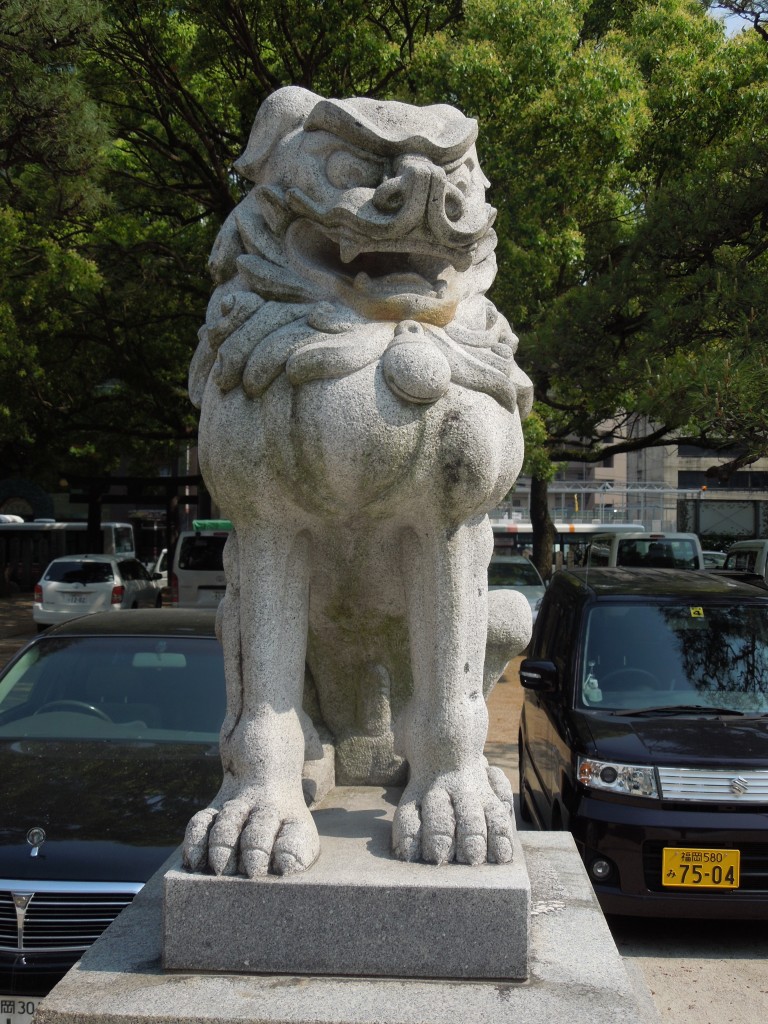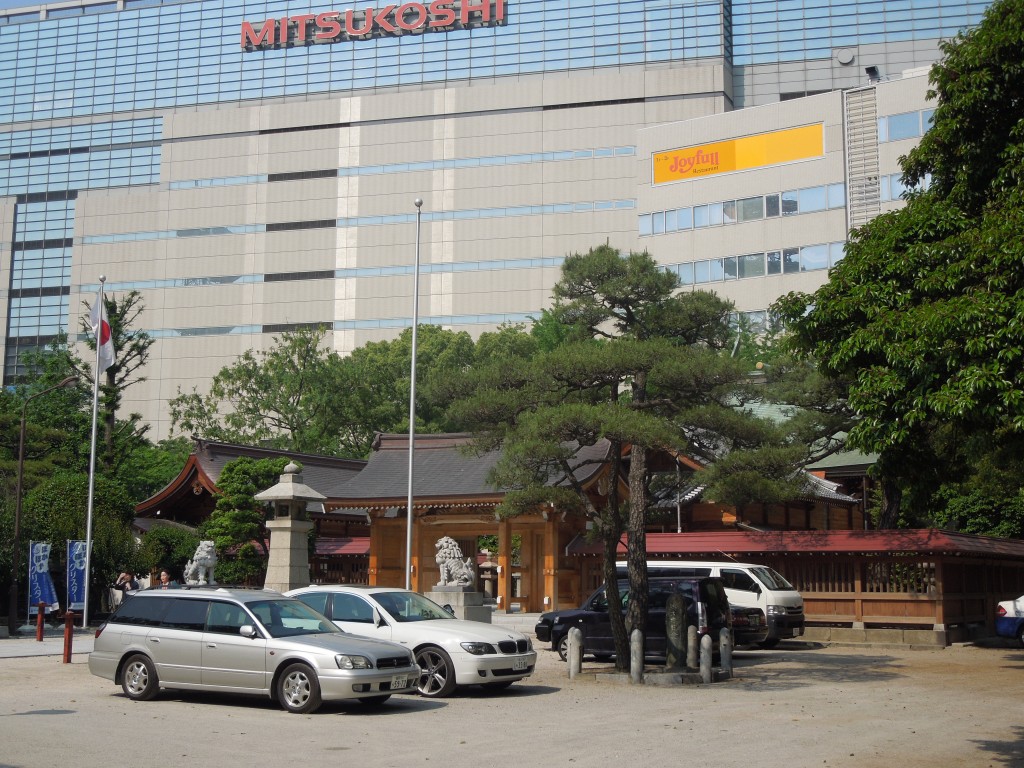
Kego Shrine in downtown Fukuoka: a shrine to consumerism?
Kego Shrine in the midst of Tenjin, Fukuoka, is a sorry-looking place, swamped as it is by concrete, consumerism and car parks. It’s like a vision of the degradation of spirituality in modern life. A religion whose roots lie in the celebration of awe and wonder has been dessicated by the sterility of contemporary commercialism.
The shrine was originally on another site and moved here in 1608. Named after a defense facility at Dazaifu named Keigo-sho, it stood not far from the Yamato state’s Korokan (guesthouse for diplomats). It was connected with such historical events as the revolt of Fujiwara Sumitomo, and generations of local lords worshipped here as a tutelary shrine of Fukuoka castle (it was the Ubugami of the daimyo Kuroda Tadayuki). I wonder what he’d think of it now!

Noticeboard of a Conservation Society to protect greenery
Once no doubt the shrine was surrounded by a large grove of trees. Now – irony of ironies – a noticeboard announces the intentions of a Greenery Conservation Society. It stands against the backdrop of a desolate treeless space. Cars, not kami, take priority here.
There seemed something decidedly out of balance about the atmosphere of the shrine, and the tone was set by the shishi guardians at the shrine entrance, both of which are strikingly male. This flies in the face of yin-yang equilibrium, and when I mentioned it to a shrine priest, he replied sheepishly that the statues had been made about forty years ago and that Kego wasn’t the only shrine to have a male-male pairing. However, what it signified or why it was ordered he was unable to say.
Feminist ideology has long held that patriarchal values lie at the root of humankind’s war on nature, so perhaps there’s a link here (though it’s worth noting that the female propensity for shopping plays a huge part in the drive towards consumerism). But apart from the loss of a sense of wonder in modern life, Kego has another important lesson to teach, I think. Contrary to what many like to believe, Shinto is not simply a nature religion – it’s primarily an ancestral religion. The kami worshipped here, as at the vast majority of shrines in Japan, are the spirits of the ruling élite of the past. In this sense Shinto has sometimes been called a religion of Japaneseness – and Kego presents a vivid picture of just what that means in 2012.

A decidedly male guardian figure, whose partner is also male

A once proud nature religion reduced to a handful of trees

Leave a Reply